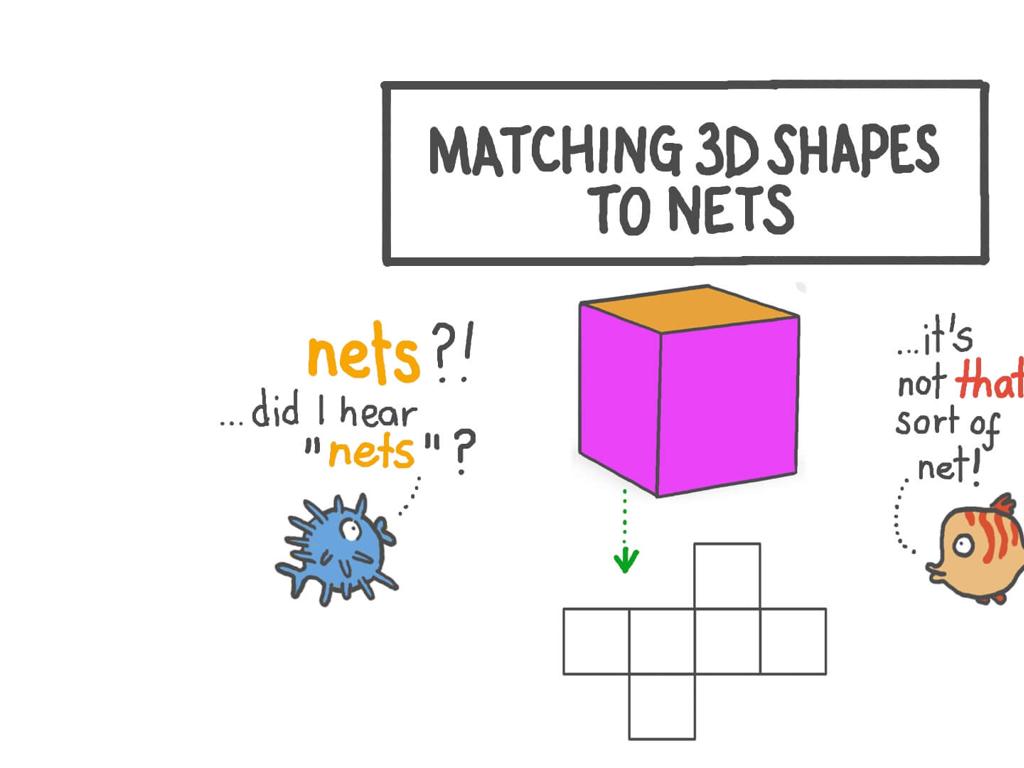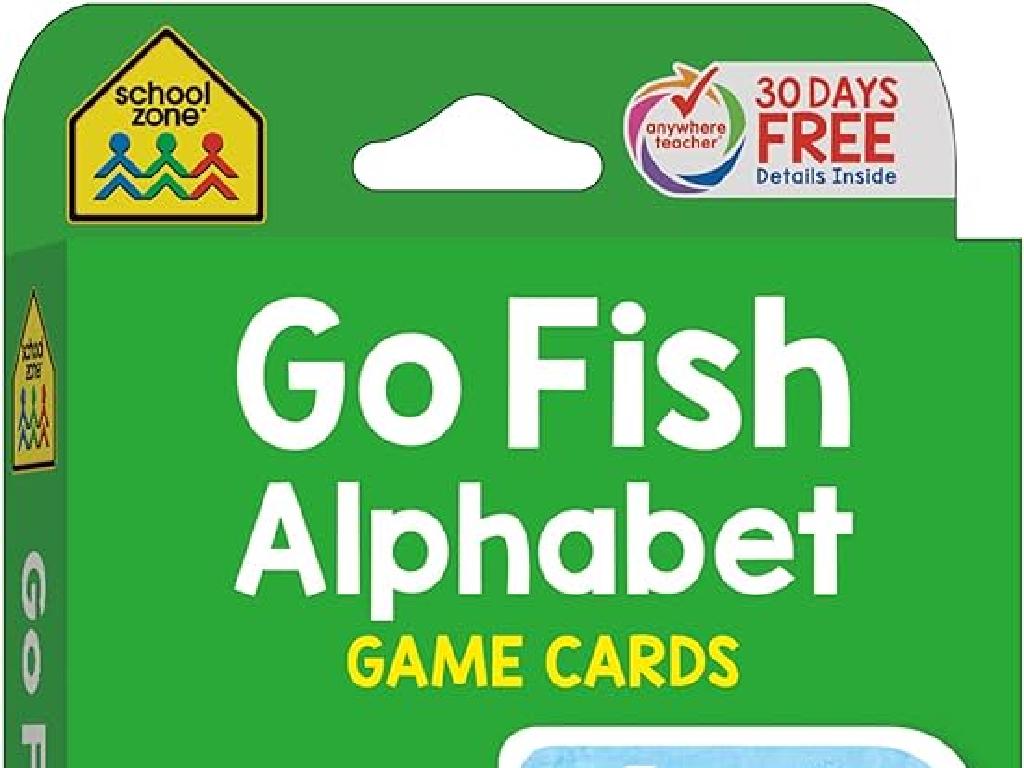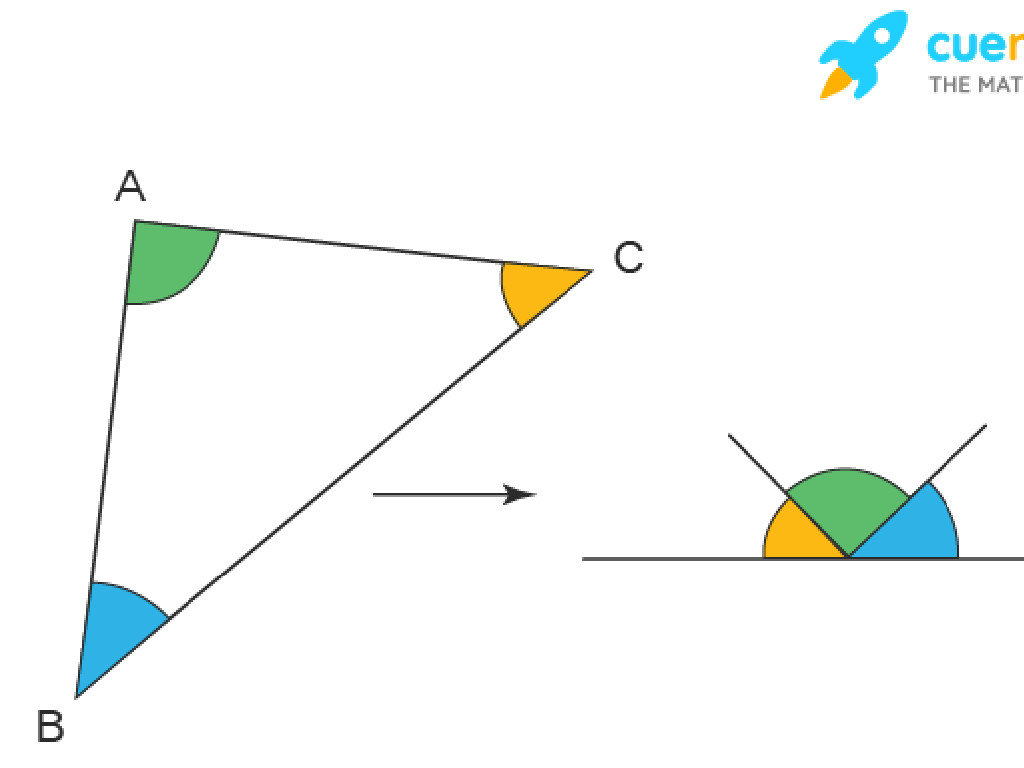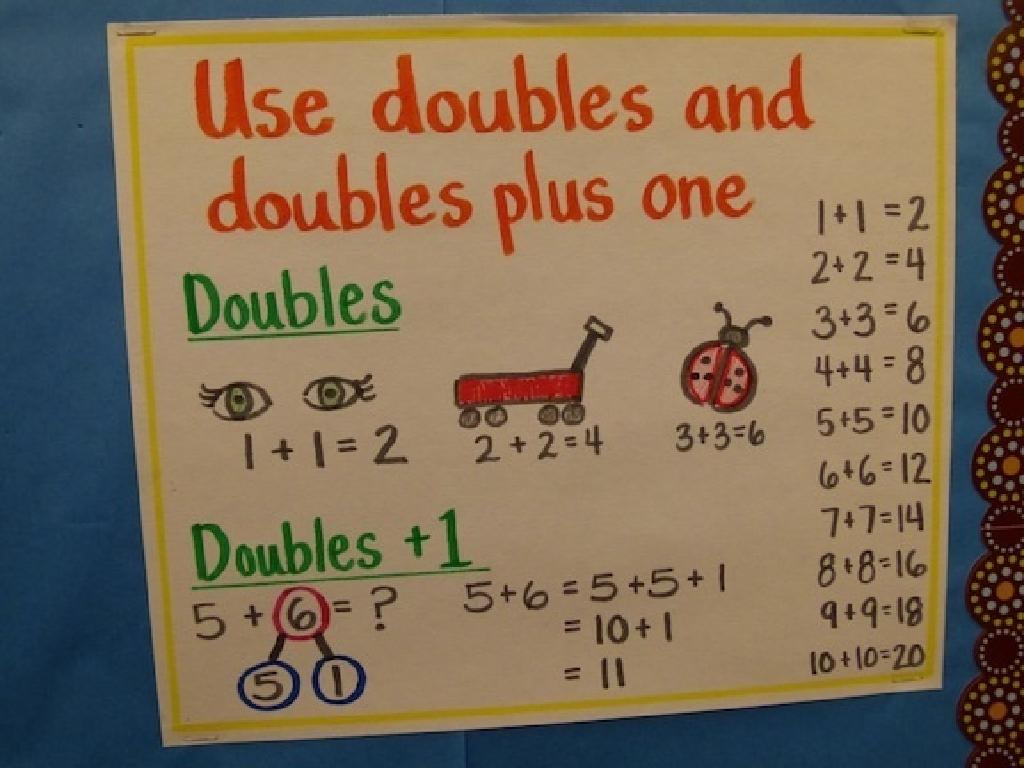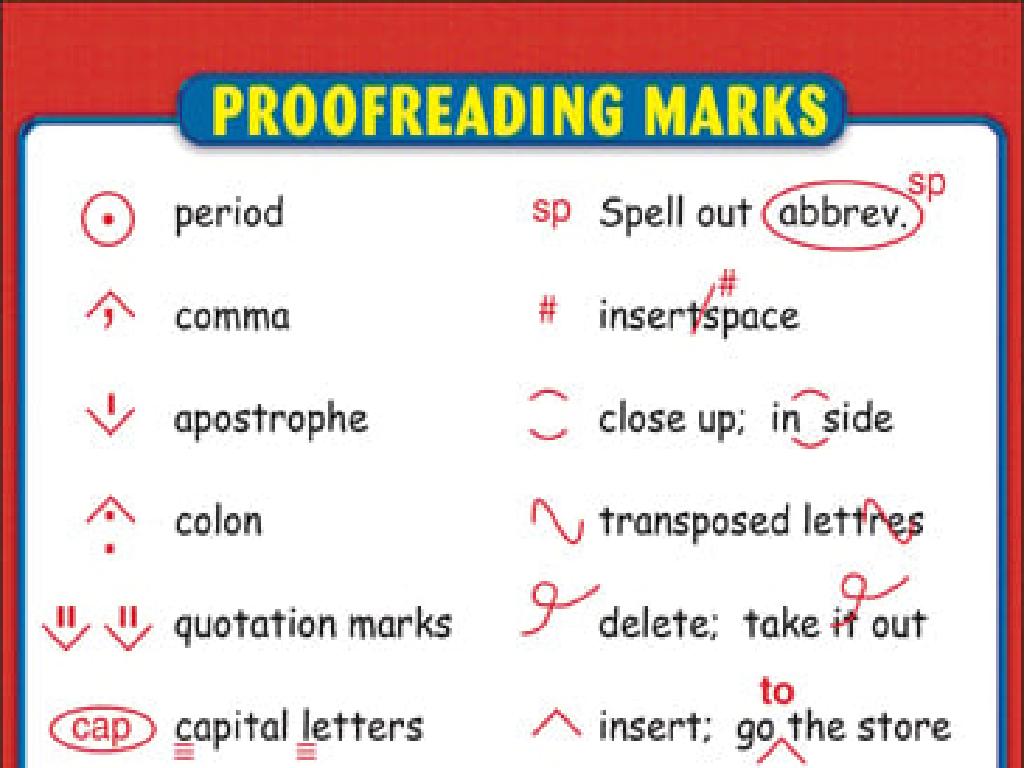Greatest Common Factor Of Three Or Four Numbers
Subject: Math
Grade: Sixth grade
Topic: Number Theory
Please LOG IN to download the presentation. Access is available to registered users only.
View More Content
Exploring GCF in Number Theory
– What is Greatest Common Factor?
– The largest number that divides two or more numbers without a remainder.
– Building blocks: Prime factors
– Prime factors are the ‘building blocks’ that, when multiplied together, give a number.
– Significance of GCF in math
– GCF simplifies fractions, finds common denominators, and solves real-world problems.
– Real-world application of GCF
– For example, GCF is used in reducing fractions to their simplest form.
|
Today’s lesson introduces the concept of the Greatest Common Factor (GCF), a fundamental aspect of number theory. GCF is the highest number that can divide a set of numbers without leaving a remainder, and it’s essential for understanding the structure of numbers. By breaking down numbers into their prime factors, students can easily find the GCF. This concept is not just a mathematical exercise; it has practical applications, such as simplifying fractions, which is a skill they will use throughout their academic and everyday lives. Encourage students to think of situations where they might need to find a common factor, such as when sharing items equally among a group.
Understanding Factors
– Define a factor
– A factor is a number that divides another without leaving a remainder.
– Explore factors up to 50
– List factors for numbers like 24, 36, and 50.
– Identify factors via multiplication
– Use multiplication facts to find factors.
– Practice finding factors
|
Begin with the definition of a factor, ensuring students understand it as a number that evenly divides another number with no remainder. Provide a chart or list of numbers up to 50 and their factors to help students visualize the concept. Demonstrate how multiplication is used to identify factors by showing that if a x b = c, then a and b are factors of c. Engage the class with practice exercises where they list out factors for given numbers, reinforcing the concept through repetition and active participation.
Finding Common Factors
– Define common factors
– Numbers that divide two or more numbers without a remainder
– Use Venn diagrams for common factors
– Venn diagrams show overlapping factors to find common ones
– Example: Factors of 12 and 18
– 12 and 18 share factors 1, 2, 3, and 6
– Discuss greatest common factor (GCF)
– The largest factor that 12 and 18 have in common is 6
|
This slide introduces the concept of common factors, which are integral to understanding number relationships in mathematics. Begin by defining common factors and then show how Venn diagrams can be a visual aid to find them. Use the example of 12 and 18 to list their factors and identify the common ones. Emphasize the greatest common factor (GCF) by finding the largest number in the intersection of the Venn diagram. This will set the stage for solving problems involving the GCF of three or four numbers. Encourage students to practice with additional examples and use Venn diagrams as a tool to visually organize their work.
Understanding Greatest Common Factor (GCF)
– Define the Greatest Common Factor
– GCF is the largest factor shared by numbers
– GCF’s role in simplifying fractions
– GCF simplifies fractions by dividing numerator & denominator
– How to find GCF by listing factors
– List all factors of each number, then identify the largest common one
– Practice finding GCF with examples
– Example: Find GCF of 18, 27, and 36
|
The Greatest Common Factor, or GCF, is a fundamental concept in number theory, crucial for simplifying fractions and other mathematical operations. It is the highest number that divides two or more numbers without leaving a remainder. Understanding GCF helps students reduce fractions to their simplest form, making calculations easier and more intuitive. To find the GCF, students can list out all the factors of the given numbers and then determine the largest factor that appears in all lists. For instance, to find the GCF of 18, 27, and 36, students would list the factors of each number and find that the GCF is 9. Encourage students to practice this method with various sets of numbers to gain proficiency.
Finding the GCF of Three Numbers
– List all factors of each number
– Factors of 24: 1, 2, 3, 4, 6, 8, 12, 24
– Identify the common factors
– Common factors of 24, 36, 48: 1, 2, 3, 4, 6, 12
– Choose the largest common factor
– The GCF of 24, 36, 48 is 12
– Solve an example together
– Let’s find the GCF of 24, 36, and 48 as a class
|
Begin by explaining the process of finding the GCF (Greatest Common Factor) by listing out all the factors of each number. Then, guide students to identify the factors that are common to all three numbers. Emphasize the importance of choosing the largest of these common factors, as this is the GCF. Work through the example of finding the GCF of 24, 36, and 48, showing each step clearly. After the example, provide a practice problem for the students to solve, offering support and guidance as needed. This will help reinforce the concept and ensure students understand how to apply the steps to find the GCF.
Finding the GCF of Four Numbers
– Is GCF of four numbers unique?
– Example: GCF of 20, 30, 40, 50
– The greatest number that divides all four numbers
– Steps to find the GCF
– List factors, find the largest common one
– Group activity: Practice GCF
– Work with classmates to find GCFs of different sets
|
When finding the GCF of four numbers, the process is the same as with two or three numbers. We are looking for the largest number that can divide all four numbers without leaving a remainder. For example, to find the GCF of 20, 30, 40, and 50, list the factors of each number and identify the largest number that appears in all lists. In this case, the GCF is 10. During the group activity, students should be encouraged to collaborate and apply the steps to find the GCF of various sets of numbers. This activity will help solidify their understanding of the concept and how to apply it. Provide guidance on how to list factors and remind them to check for the highest number common to all sets. Offer several sets of numbers for the groups to work on, ensuring a variety of examples.
Methods to Find the Greatest Common Factor (GCF)
– Prime factorization method
– Break numbers into prime factors, then multiply common primes
– Euclidean algorithm
– Use division to find GCF of two numbers, then apply to others
– Choosing the best method
– Consider number size and familiarity with methods
– Practice with examples
|
This slide introduces students to different methods of finding the GCF of three or four numbers. The prime factorization method involves breaking each number down into its prime factors and then multiplying the common prime factors together. The Euclidean algorithm is a more advanced technique that involves a series of divisions to find the GCF of two numbers, which can then be applied to additional numbers. It’s important to guide students on how to choose the most efficient method based on the size of the numbers and their comfort with each method. Provide practice problems for each method to help students understand and apply these techniques effectively.
Real-life Applications of GCF
– Simplifying fractions with GCF
– Use GCF to reduce fractions to simplest form
– GCF in problem-solving scenarios
– Solve real-world problems by finding GCF of amounts
– Discussing GCF applications
– Where have you seen or used GCF outside class?
– Understanding GCF’s role
– Grasp how GCF helps in various math and daily tasks
|
This slide aims to show students the practical applications of the Greatest Common Factor (GCF) in everyday life. Start by explaining how GCF can be used to simplify fractions, making them easier to work with by dividing the numerator and denominator by their GCF. Then, illustrate how GCF can be applied to solve problems, such as when dividing things into smaller sections or distributing items evenly. Encourage a class discussion on where else GCF might be used, such as in planning events or construction projects. The goal is to help students see the value of GCF beyond the classroom and understand its role in simplifying and solving various types of problems.
Class Activity: GCF Scavenger Hunt
– Search for classroom objects
– List all factors of each object’s number
– Factors are numbers you can multiply to get another number
– Determine the GCF of these numbers
– The greatest number that divides into each without a remainder
– Present GCF findings to the class
|
This interactive activity is designed to help students apply their understanding of the greatest common factor (GCF) in a fun and engaging way. Students will search the classroom for objects that can be associated with numbers (e.g., a pack of 12 pencils, a book with 28 pages, etc.). They will then list all the factors for these numbers and find the GCF for each set. Afterward, students will present their findings, explaining how they determined the GCF. For the teacher: Prepare a list of objects with associated numbers beforehand to ensure a smooth activity. Consider grouping students and providing each group with different sets of numbers to find the GCF. This will encourage collaboration and discussion among students. Be ready to assist students who may struggle with finding factors or determining the GCF. After presentations, discuss how this skill can be useful in real-life situations, such as simplifying fractions or distributing items evenly.
Wrapping Up: GCF and Your Homework
– Review today’s GCF lesson
– Homework: Find real-world GCFs
– Look for numbers around you, like page numbers, house numbers, etc.
– Note environmental numbers
– Observe numbers on items at home or school and find their GCF
– Get ready for a GCF quiz
|
As we conclude today’s lesson on the Greatest Common Factor (GCF), students should be able to understand and find the GCF of three or four numbers. For homework, students are encouraged to observe their environment to find sets of numbers and determine the GCF, applying what they’ve learned in a practical context. This could include numbers from everyday objects like book pages, addresses, or even product codes. Encourage creativity in finding numbers. Additionally, students should prepare for a quiz on GCF during the next class, ensuring they review the methods for finding GCF, such as listing factors or using the Euclidean algorithm. This will help reinforce their understanding and ensure they are comfortable with the concept.

